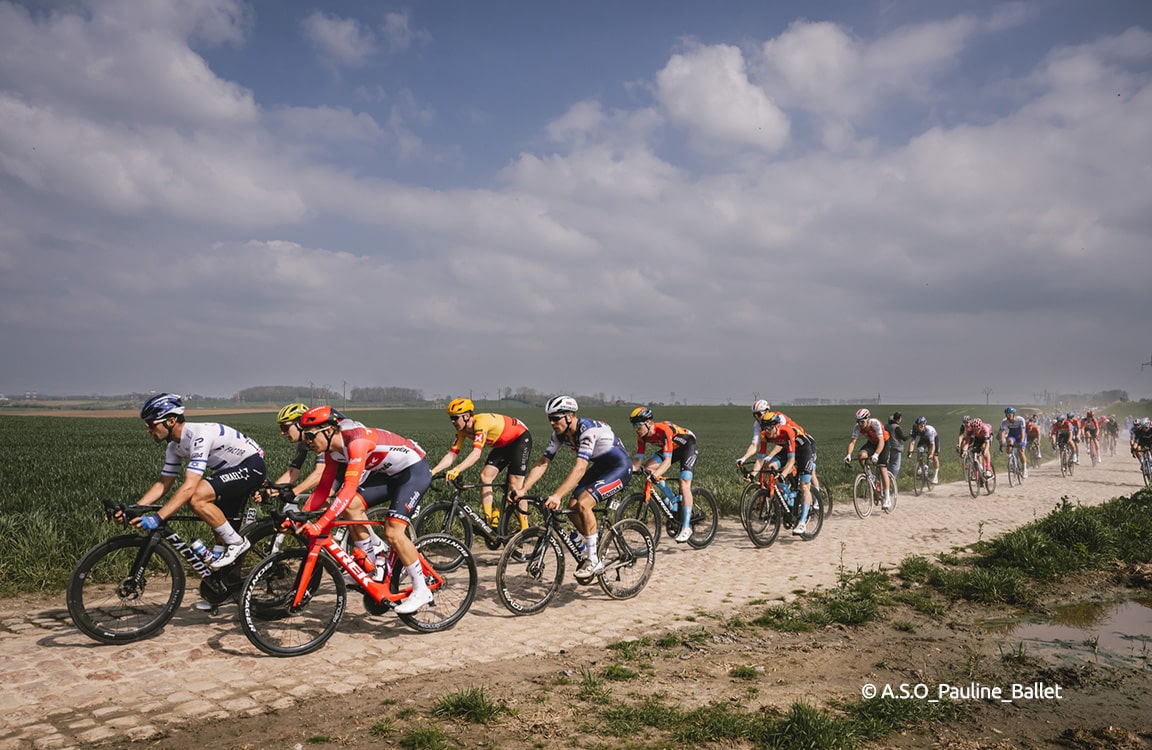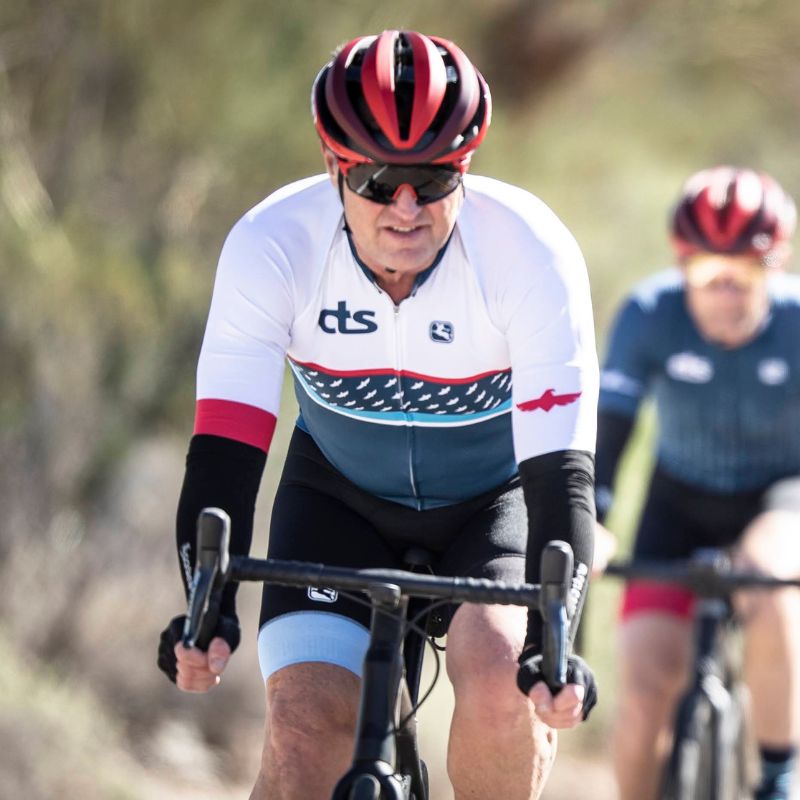
Unlock Your Best Long Ride Performance
By Chris Carmichael,
CTS Founder and Chief Endurance Officer
Performance is never just about fitness, or even determination. Your performance in specific events often comes down to how you use your energy. Many cyclists are used to riding 2-4 hours, but rarely get the opportunity to go really long and stretch themselves to 6+ hours. The important thing to remember is that you have the fitness to have a good day on the bike. You just have to be smart about how you meter out your efforts. The Classics in Europe offer some great examples for you to follow.
This weekend you should watch Paris-Roubaix Femmes on Saturday and/or the men’s Paris-Roubaix on Sunday. It’s always a race worth watching, and if watching Paris-Roubaix doesn’t inspire you to get out there and put in a storming training ride, I don’t know what will. And as you watch, there are some lessons you can take away and use for your own performance.
Let the distance and terrain take their toll
The men’s Paris-Roubaix is 260 kilometers this year and the women’s race has been extended slightly to 148.5 kilometers. The women will race over 29.2 kilometers cobblestones over 17 sectors. The men will race 29 sectors over 55.7 kilometers, which is the most in 30 years. Even if you’re the strongest rider in the race, you don’t have to be the strongest rider in every kilometer. Pros won’t waste energy trying to split the field in the first 50km when the climbs and cobblestones will do it for them by the 150th.
In local and regional racing, riders make the mistake of attacking when everyone is still fresh. That’s like trying to break a green branch. Pushing the pace or contributing to the pacemaking early is useful for wearing down the competition. Wait until those branches are dry and brittle, and then break them with a single strike.
Feel Stronger in 6 Weeks — No Matter Your Age
Climbs feel steeper? Recovery slower?
You’re not done getting faster — you just need a smarter plan.
The 6-Week Masters Power Build Coaching Program is designed for cyclists 50+ who want to boost power, recover faster, and ride stronger — all with expert 1:1 coaching.
- Personalized 6-Week Training Plan
- 1:1 Coaching + TrainingPeaks Premium
- Mobility & Strength Bonus Guides
💪 Guarantee: Stronger or free.
Start your 6-week journey for $149When you feel great, do less
When you have great legs it can be hard to resist the urge to let everyone else know about it, but that’s what you have to do in order to win hard races. To win you’ll need to initiate or respond to the move that creates a selection, and then you’ll have to attack or sprint to finish it off. Don’t telegraph your punches. Every time you make a move, you’re providing information to your opponents. If you sprint across a gap like it’s nothing, they’ll know you have the strength to be dangerous later on. If you’re attacking or constantly going to the front to push the pace, you’ll become someone to watch. It’s better to be anonymous, especially during really long events, so when you attack no one knows whether you’re worth chasing.
When you are not in a race but feeling great on a long ride, you also want to be conservative with your early efforts. Don’t do more than your share at the front of the group ride because you feel strong. Save that energy for a harder portion of the group ride or for some strong pulls towards the end (when the tired riders will really appreciate the rest!). Similarly, during long solo rides, crushing that power output and average speed early on can come back to haunt you later when you’re out of energy. You’ll feel better about your ride if you finish strong, and there are durability training benefits to minimizing the dropoff in power output (through better pacing) in long rides.
► Free Cycling Training Assessment Quiz
Take our free 2-minute quiz to discover how effective your training is and get recommendations for how you can improve.
Stay on top of nutrition and hydration
No matter how strong you are at the start, underfueling or making a hydration mistake can take you out of the lead group or cause you to significantly slow down. In races like Paris-Roubaix, riders must carefully consider where to eat and drink based on the technical nature of the course. Same goes for gravel races and mountain bike races, and road races and criteriums to a lesser extent. You must get comfortable eating and drinking on the go, which means eating at speed during training even when you could slow down or stop to eat instead. Don’t only drink from your bottles at traffic lights or reach for food when you have one foot on the ground! Before events, and even group rides, learn where you’ll be able to refill bottles or get feeds and create a plan.
Stick with riders who can contribute
Out of 200+ riders at the start line of Paris-Roubaix, there may be 30 capable of winning a hard 200-kilometer race. Of them, perhaps 20 could win at 220. But you can count on two hands the number capable of winning at 250-265 kilometers. It’s a difficult phenomenon to describe, but riders have a point – whether it’s kilojoules or time in the saddle or a mental barrier – where the lights go out. It takes time and experience to gain the inner strength to keep the motor going strong all the way to the line. And extending that range is a big part of your training. When you know you have what it takes to go the distance, don’t worry so much about the riders who don’t. In the final 40km, when it really counts, they’ll be gone.
How does this relate to amateurs and Masters in gravel races, gran fondos, road races, and endurance mountain biking? If you’re a rider who has the experience and durability to ride strong for the whole distance, be careful who you ride with. You may need to go harder in the beginning of the event so you’re with a group of riders who have similar capabilities to yours later in the day. What you don’t want to do is to ride so conservatively early on that you spend the last third of the event catching and passing riders and groups that can’t help you or contribute to any pacemaking.
► FREE Mini-Course: Learn How to Maximize Your Limited Training Time
Learn step-by-step how to overcome limited training time and get faster. Walk away with a personalized plan to increase your performance.
"*" indicates required fields


Comments 7
A tip of the cap (helmet) to all you racers! I am in it just for the scenery, endorphins. When on a long high altitude mountain climb I just think of all you racers and how you dig so deep time and time again!!!! this climb no problem! Impressive. I don’t think the general public has any idea how hard racing like this is!
On these long rides all extra training you do, like gym and high frequency pedaling pays cash (I hope). 6+ hours in the saddle without well developed upper body will be pain. Going for “Etape du Tour” (170km, D+3500m) I am interested in articles about rides >140km. Thanks a lot Chris.
Yes please ! I am signed up for Nice this summer and I would welcome any tips. Especially because it will be early July and I expect it will be quite toasty.
Can’t wait, we need longer classic type rides here in South Africa too.
it is about what you train for. Most riders don’t train long for the long hard events. That strength comes with age and experience. Can’t wait for the racing to begin
Thank you
JML Racing
All great reminders!!
As a business and life coach I can say these are great life and business rules. Thank you.